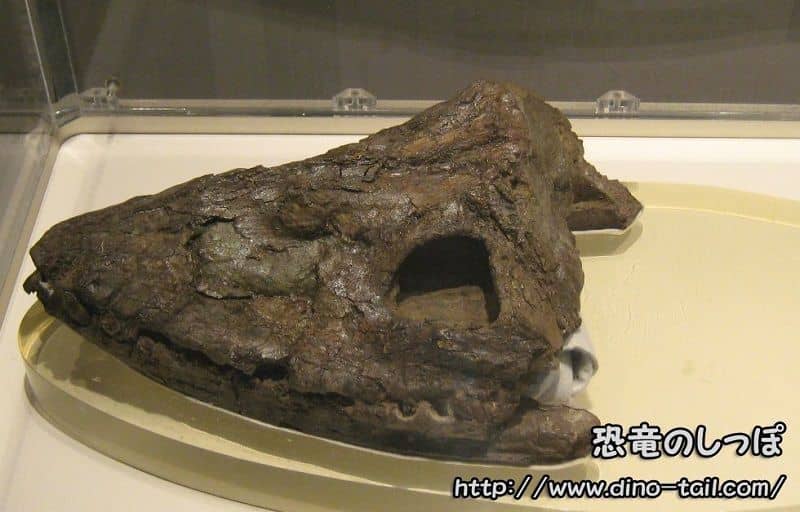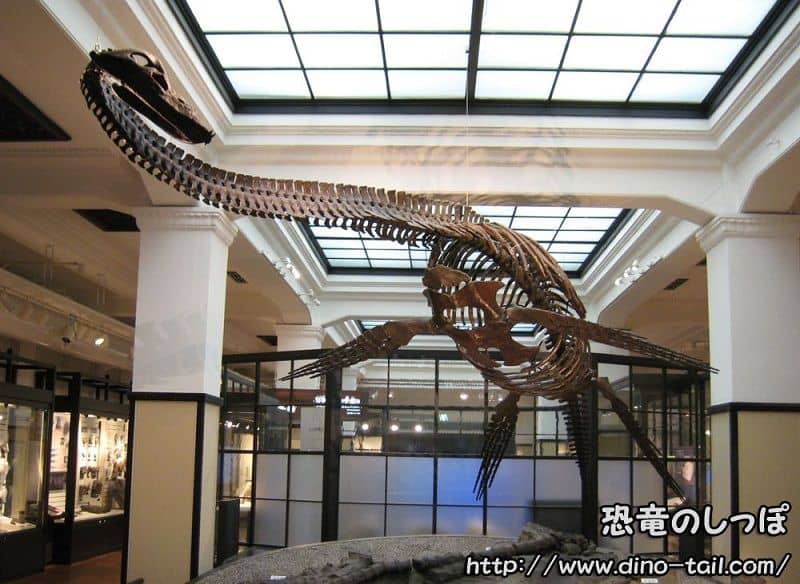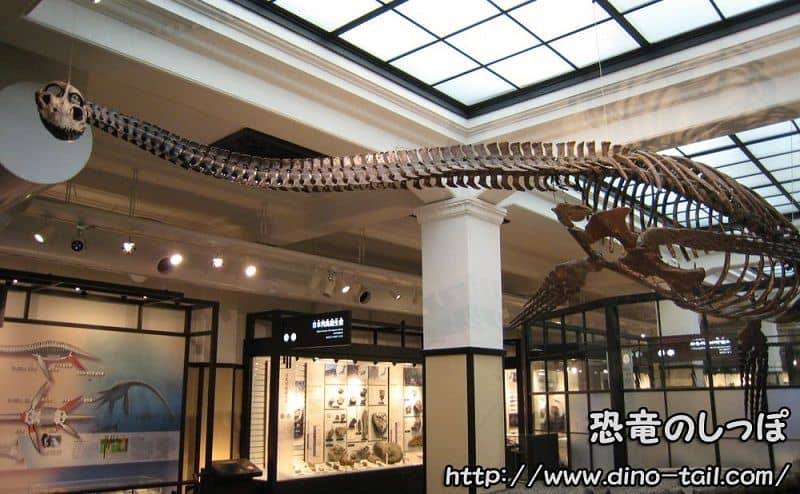Basic Data on Futabasaurus
| Scientific Name (Genus) | Futabasaurus |
| Japanese Name | Futabasuzukiryu |
| Meaning of Name | Lizard from the Futaba Group (name of the geological formation where it was discovered) |
| Classification | Plesiosauria, Plesiosauroidea, Elasmosauridae |
| Total Length | Approx. 7m |
| Diet | Carnivorous (piscivorous) |
| Period | Late Cretaceous (approx. 80 million years ago) |
| Sub-classification / Species Name | Futabasaurus suzukii |
| Year of Paper Publication | 2006 |
Features: Japan's First Unique Plesiosaur
Futabasaurus was an elasmosaurid plesiosaur that lived in the seas near Japan during the Late Cretaceous. It is estimated to have been about 7 meters long. Its skeleton has several features not seen in other plesiosaurs.
- Widely spaced eye sockets : The distance between the left and right eye sockets is very wide.
- Long humerus and femur : Long bones (radius and tibia) connect between the humerus of the pectoral fin and the femur of the pelvic fin.
- Short cervical vertebrae : For an elasmosaurid, each of the neck bones (cervical vertebrae) is relatively short.
These unique features were the deciding factors in proving that Futabasaurus was a new genus and species of plesiosaur, unlike any other in the world.
Shark Attack: Traces of an Incident Left in the Fossil

Over 80 shark teeth were found around the discovered Futabasaurus fossil. These teeth have been identified as belonging to shark species such as Cretalamna and Squalicorax, which lived in the seas at that time. The bones of Futabasaurus also had bite marks believed to be from these sharks.
Whether this was an attack on a living Futabasaurus by a pack of sharks or scavenging on its carcass after death is uncertain, but it vividly conveys the harsh struggle for survival that took place in the seas of Japan at that time.

The Discovery and Scientific Name of Futabasaurus

Futabasaurus is the most famous plesiosaur in Japan, known by its Japanese name: Futabasuzukiryu . Its discovery began with the passion of a single high school student.
In 1968, Tadashi Suzuki, then a second-year high school student, discovered an unusually large bone while searching for shark tooth fossils on the banks of the Okawa River near his home in Iwaki City, Fukushima Prefecture. This was the moment of discovery of the first nearly complete plesiosaur fossil in Japan.
This discovery sent shockwaves through the Japanese paleontological community, but due to a lack of good comparative specimens, it could not be definitively identified as a new species for a long time. However, after 38 long years, in 2006, it was finally recognized as a new genus and species. In honor of the "Futaba Group" formation where it was found and its discoverer, "Mr. Suzuki," it was given the scientific name Futabasaurus suzukii .
Another "Futabasaurus"?
In fact, before this name was officially given to the plesiosaur, Japanese researchers informally used the nickname "Futabasaurus" for another dinosaur (a theropod) discovered in Fukushima Prefecture. However, this theropod was never formally described with a scientific name, and when the plesiosaur was described as Futabasaurus suzukii in 2006, the name officially became that of the plesiosaur "Futabasuzukiryu."
